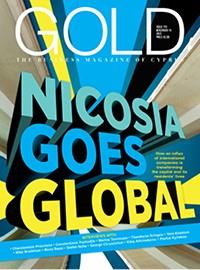- Tariffs represent biggest shake-up to global economic order in decades
- Global growth outlook revised lower because of trade tensions
- Fed waiting to see impact in data before acting on interest rates
- Rising geopolitical risks threaten falling oil price trend
At the midway point of 2025, there was heightened uncertainty over how global macroeconomic developments would shape up for the remainder of the year. For all the chaos that followed US President Donald Trump’s “Liberation Day” announcement on tariffs on April 2, US equity markets in June were within touching distance of their all-time highs. The US administration’s constantly shifting trade policies left markets guessing whether fears of a slower economy or tariff-induced higher inflation will colour the Federal Reserve’s next moves on interest rates. Moreover, Israel’s strikes on Iran ratcheted up Middle East geopolitical risks once more.
The US’ effective tariff rate on imports stood at an estimated 13.5% as of mid-June 2025, a jump from 2.3% at the end of 2024. The rate surged even higher in the immediate aftermath of “Liberation Day”, when the US slapped a minimum 10% “reciprocal tariff” on all imports, ranging substantially higher for countries with which it ran a trade deficit. The effective tariff rate peaked at 26.9% on April 9, with the US and China then embroiled in a tit-for-tat escalation of rates against each other. It fell back when Trump announced a 90-day pause on “reciprocal” rates above the 10% baseline for all countries except China. De-escalation with China later followed, with the two countries agreeing to hold talks and the US lowering the minimum tariff rate to 30% for goods from the world’s largest exporter. That brought us to the uneasy status quo as of June 17, with the US involved in trade negotiations with countries on multiple fronts but little tangible in terms of comprehensive deals as the clock runs down.
The reaction so far from equities is instructive. The S&P 500 hit a record high on February 19, then plunged 19% through April 8 putting it on the brink of a bear market. The subsequent rally saw the index come within 1.6 percentage points of its previous high in the first half of June. Such a dramatic turnaround reflected the narrative prevailing in markets: tariffs will probably stay around their current levels rather than rise further, deadlines are likely to be extended when deals are not reached in time and, although Trump may sometimes ratchet up trade tensions with fresh announcements, he will always walk back any measures within a few days.
But it is worth noting here that, aside from the risk that this narrative is wrong and the trade war does escalate again, the US’ 13.5% effective tariff rate remains the highest since 1941. It represents the biggest uprooting of the global economic order in decades. If equity prices push past the resistance levels that were holding them back in the first half of June – and break out to new records – this will represent an implicit verdict from markets that the transformative impact of AI, baked into valuations of the “Magnificent Seven” tech giants, outweighs the shift towards a structurally more protectionist trading regime.
As for the size of the expected economic hit, the OECD released an updated forecast in June, projecting that the global growth rate would slow to 2.9%, both this year and in 2026, down from 3.3% in 2024. Its previous forecast was for growth of 3.1% for 2025 and 3% next year. The IMF in April revised lower its 2025 and 2026 forecasts, by 0.5 and 0.3 percentage points respectively, to 2.8% and 3%. The IMF sees US GDP expanding 1.8% this year and 1.7% in 2026, down from 2.7% and 2.1% respectively in its earlier forecast. For the eurozone, the IMF anticipates a smaller impact, with GDP expected to grow 0.8% this year, 0.2 percentage points less than the previous forecast, and 1.2% in 2026, down from 1.4%.
Our own analysis suggests that in a baseline scenario where US tariffs on EU goods remain at 10%, the cumulative reduction in eurozone GDP resulting from the tariffs is likely to amount to 0.4 percentage points in 2025 and 2026. However, that model scenario incorporates a $10 drop in the price of crude oil per barrel, in line with the movement seen after “Liberation Day”. Israel’s attack on Iran, which began just a few days before the time of this writing, caused a spike in the price of Brent crude to $76.5 a barrel on June 17 from $63.9 at the end of May. Whether the jump was just a short-term reaction that fades, or the start of a longer-term push higher, is unknown at this point. However, if it is the latter, then higher oil would represent a reversal of one of the year’s major market trends so far, and dampen the eurozone’s growth prospects, as well as cause headline inflation to increase.
The potentially stagflationary impact of rising geopolitical risk adds to what was already a tricky balancing act for central banks. In the US, Chair Jerome Powell’s job has been made even harder by Tump putting pressure on the Fed’s independence, calling on Powell to cut interest rates. Even if the President refrains from firing the Fed Chair, Powell’s term in the hot seat ends anyway in May 2026, so a theme of the year ahead will be on the identity of his successor. That person is likely be more dovish on monetary policy, in line with Trump’s desire for lower interest rates. For now, the Fed insists that it will remain data dependent. The key conundrum is that, as of early June, the data was giving conflicting signals on how big the tariff impact on the economy is. As a result, the Fed has kept its policy rate on hold at 4.5% throughout 2025 so far.
By contrast, the European Central Bank’s easing path has been much more straightforward as inflation has steadily glided towards its 2% target. The ECB’s Governing Council has cut the deposit rate by a quarter of a percentage point at each of its meetings this year, bringing it to 2%. As a result, even dovish members of the policy committee, including Bank of Greece Governor Yannis Stournaras, now say they think the current monetary easing cycle is almost over.
- By Marcus Bensasson, Research Economist, Eurobank Research
This opinion article first appeared in the 2025 edition of The Cyprus Journal of Wealth Management. Click here to view it. To view the full edition, click here









